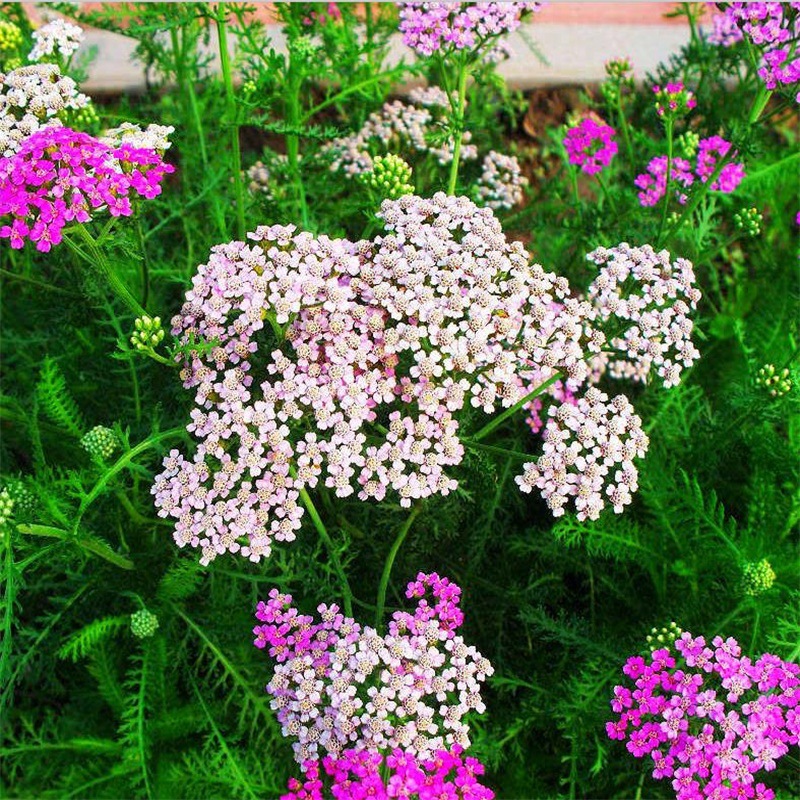Researchers Identify Anti-neuroinflammatory Sesquiterpene Lactones from Achillea millefolium L.
Editor: | Jun 28,2025
Some species of the Achillea genus in the Asteraceae family have been recorded in the Chinese Pharmacopoeia and Shennong's Classic of Materia Medica, highlighting their significant medicinal value. According to the Flora of China, there are 10 species of Achillea in China, with 6 species distributed in the Xinjiang, including Achillea millefolium. A. millefolium, also known as yarrow, is used as a traditional medicine in many countries and regions worldwide to treat gastrointestinal disorders, liver and gallbladder diseases, promote wound healing, alleviate skin inflammation, manage hypertension, combat respiratory infections, reduce fever, and address rheumatic conditions. Sesquiterpenoid is one of the key active components in A. millefolium, featuring diverse structures and excellent biological activities. They have long been a focal point in natural medicinal chemistry research and are popular targets in the search for drug lead compounds.

Achillea millefolium L.(picture is from the Internet)
A research team led by Prof. Haji Akber Aisa from the Xinjiang Technical Institute of Physics & Chemistry of the Chinese Academy of Sciences isolated 16 sesquiterpene lactones, including 12 previously undescribed ones from the whole plant of A. millefolium. This work was published in Journal of Molecular Structure
Structures of these isolates were established using spectroscopic techniques, including HRMS and NMR, and their absolute configurations were determined by means of single-crystal X-ray crystallography, 13C NMR calculations with DP4+ probability analyses, and ECD calculations. Among these undescribed compounds, one compound is a pseudoguaianolide, two compounds represent rare 3-oxa-guaianolides, three compounds are unusual chlorine-containing guaianolides, and one compound is an uncommon 1,10-seco-pseudoguaianolide. These isolates highlight the rich structural diversity of sesquiterpene lactones especially guaianolide-type in A. millefolium.
In vitro anti-neuroinflammatory activity investigations using a LPS-induced BV2 microglial cell model disclosed the inhibitory activity of five compounds against NO release. Among these active compounds, millefoliumine S exhibited the most significant activity with an IC50 value close to that of the positive control, dexamethasone.
Further investigations on the potential anti-neuroinflammatory mechanisms of millefoliumine S were conducted. As a result, enzyme-linked immunosorbent assay disclosed that millefoliumine S dose-dependently inhibited the release of TNF-α, IL-6, and PGE2 from LPS-induced BV2 cells. Western blot and immunofluorescence assays revealed that millefoliumine S inhibited the expression of iNOS/COX2 signaling-related proteins (iNOS and COX2), NF-κB signaling-related proteins (NF-κB and IκB), MAPK signaling-related proteins (MAPK, JNK, and ERK), and pyroextinction signaling-related proteins (NLRP3, cleavaged-caspase 1, ASC and IL-1b).
Additionally, molecular docking study indicated that millefoliumine S formed multiple hydrophobic interactions with residues of docked proteins through the seven-membered B ring and three methyl groups. The results of molecular dynamics simulation indicated that millefoliumine S could stably bind to the target protein.
Above results not only support the anti-inflammatory application of A. millefoliumas a traditional herb, but also reveal that sesquiterpene lactones especially guaianolides are the important bioactive anti-inflammatory component in A. millefolium. Meanwhile, these results could provide a solid research foundation for the development of natural lead compounds for inflammatory-related diseases.
This work was supported by the Natural Science Fund for the Natural Science Foundation of Xinjiang Uygur Autonomous Region, Distinguished Young Scholars of Xinjiang Uygur Autono-mous Region, and the Tian-Shan Talent Training Program of Xinjiang Uygur Autonomous Region.

Figure: Sesquiterpene lactones from Achillea millefolium L. and their anti-neuroinflammatory activity (Provided by Prof. Haji Akber Aisa’s group)
附件下载:
 (86) 991-3838931
(86) 991-3838931 lhskj@ms.xjb.ac.cn
lhskj@ms.xjb.ac.cn (86)991-3838957
(86)991-3838957 40-1 Beijing Road
Urumqi, XinjiangChina
40-1 Beijing Road
Urumqi, XinjiangChina